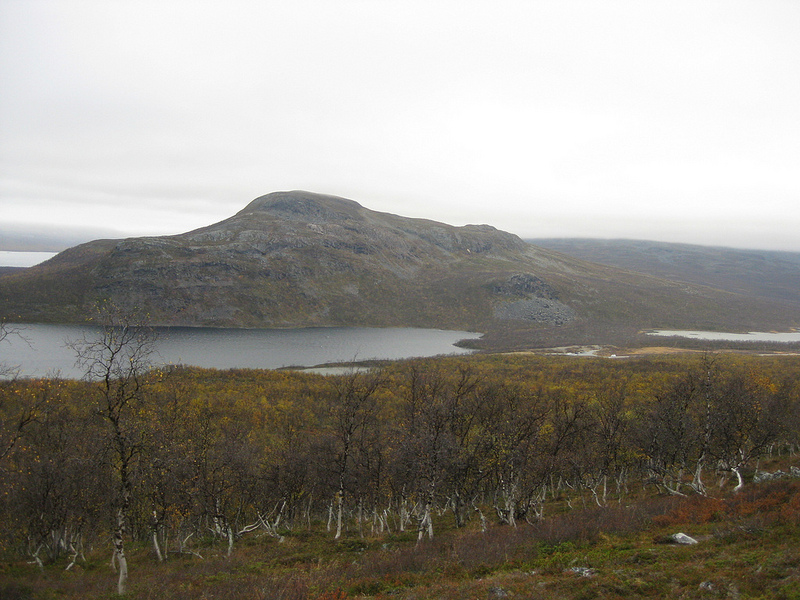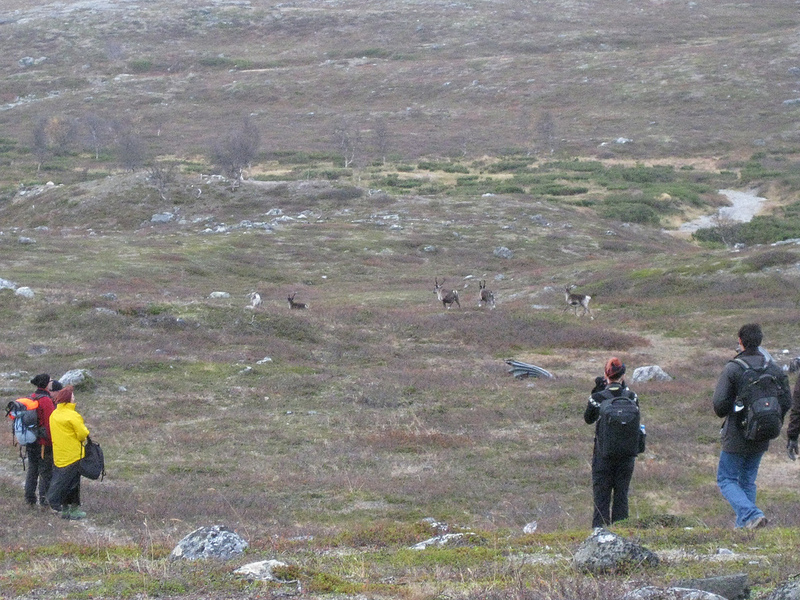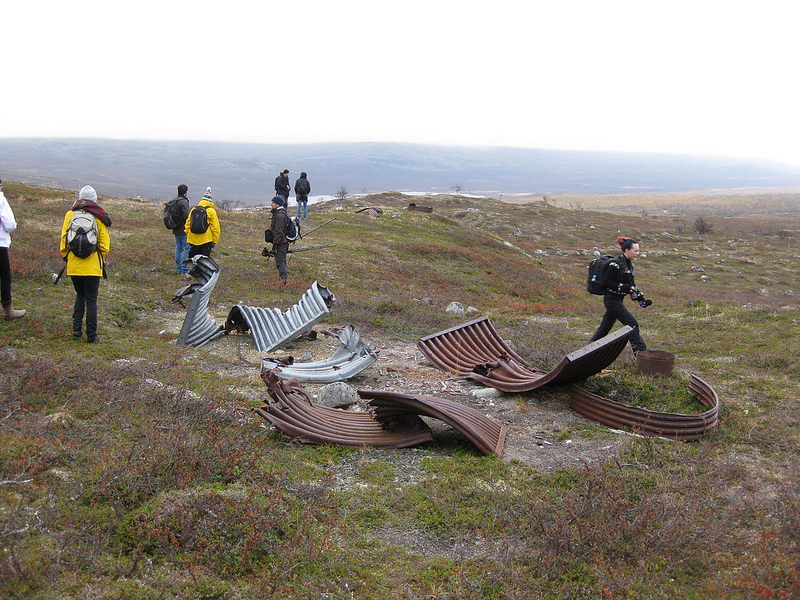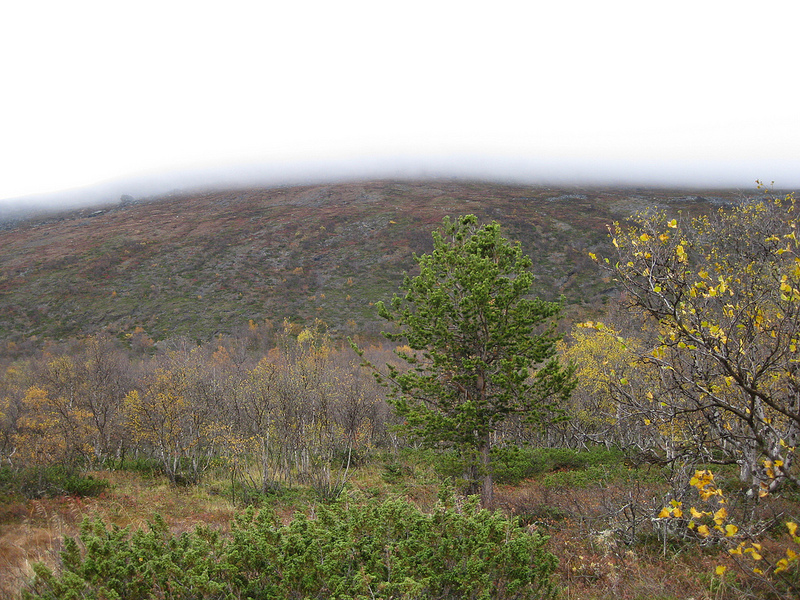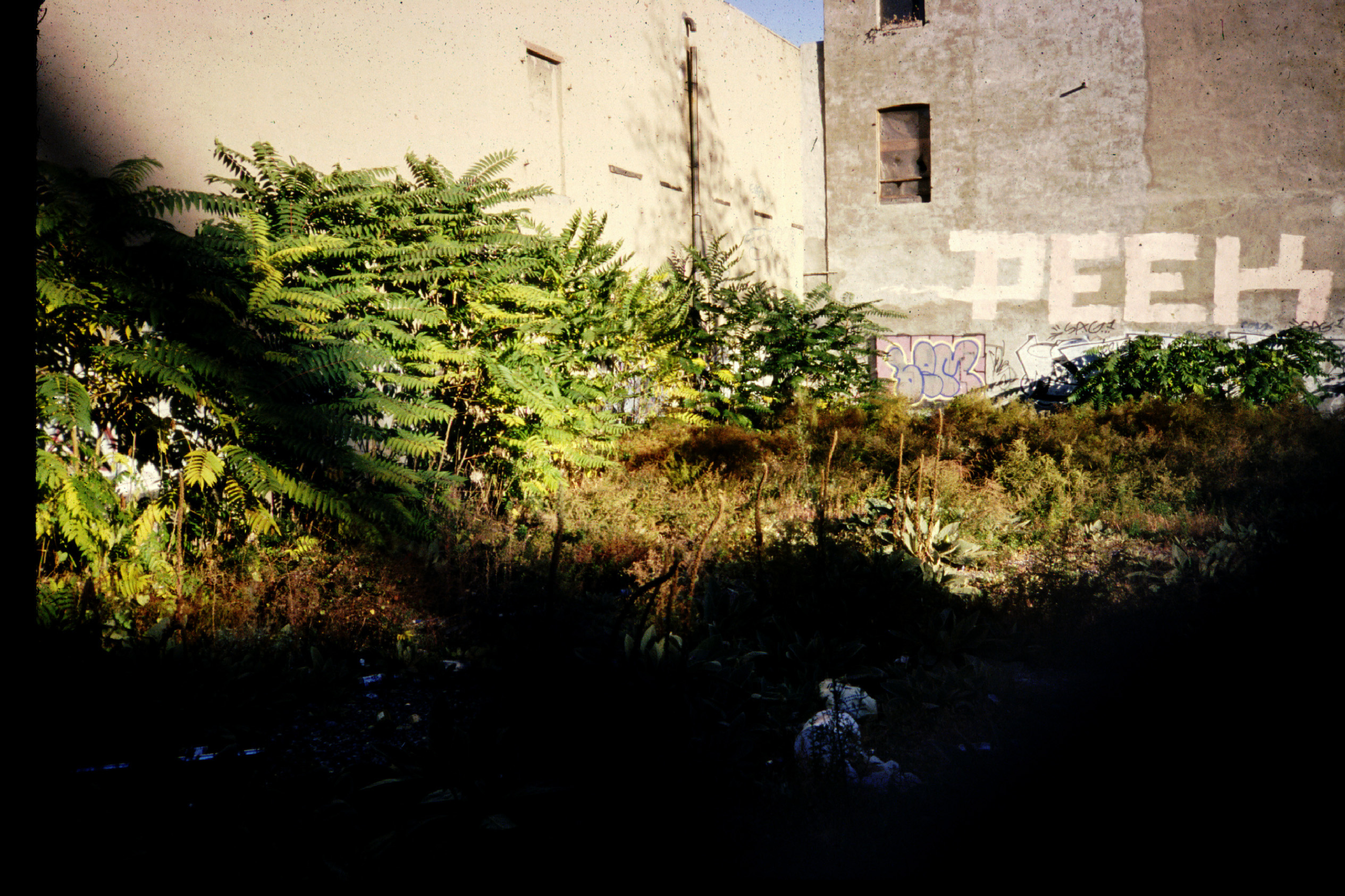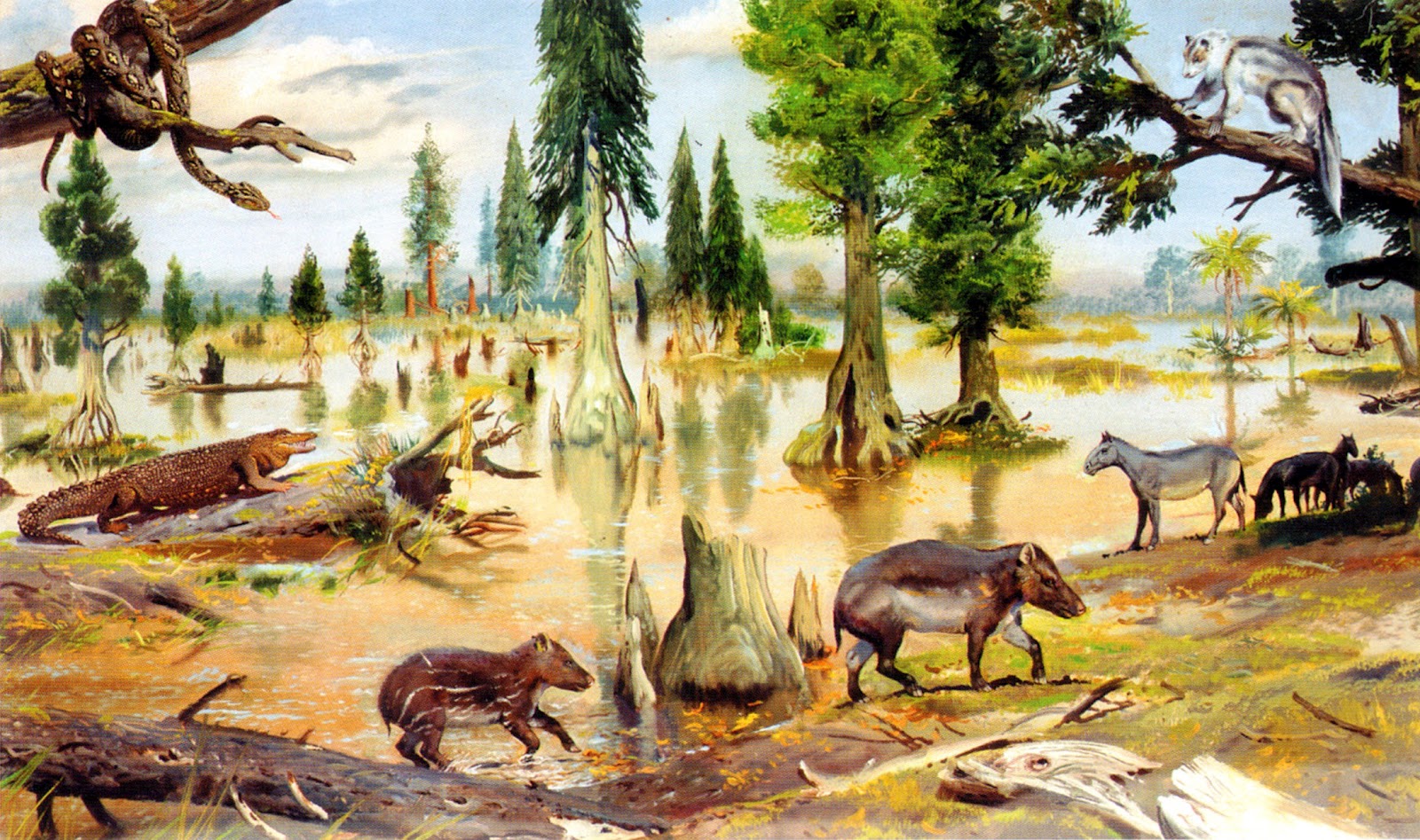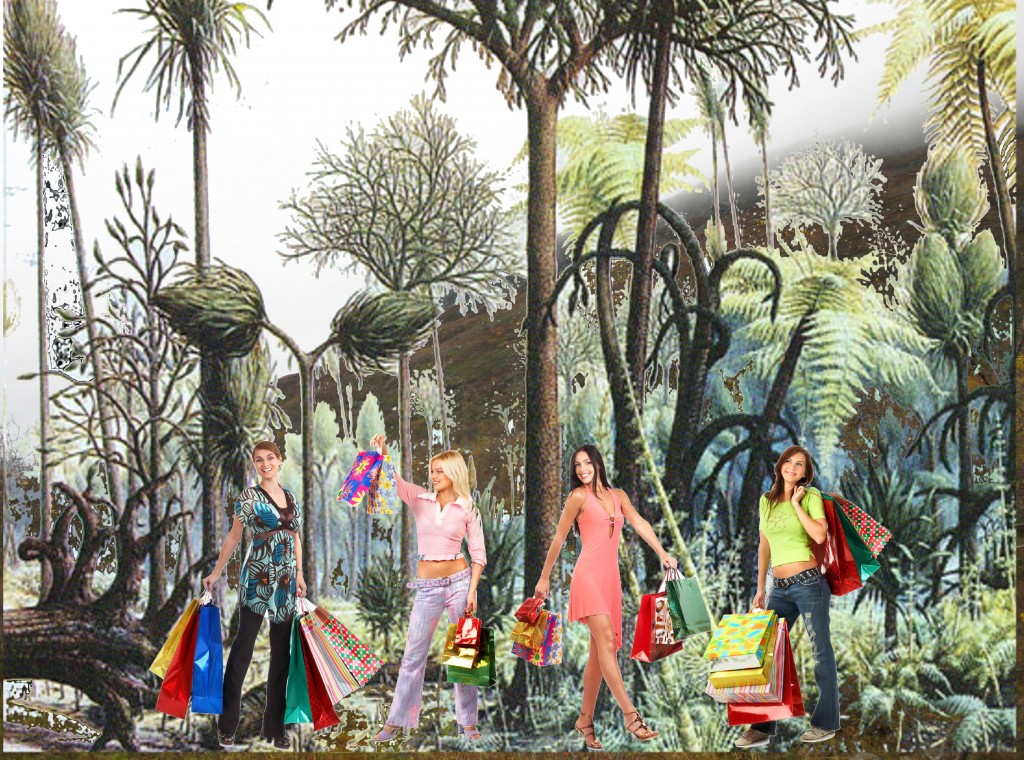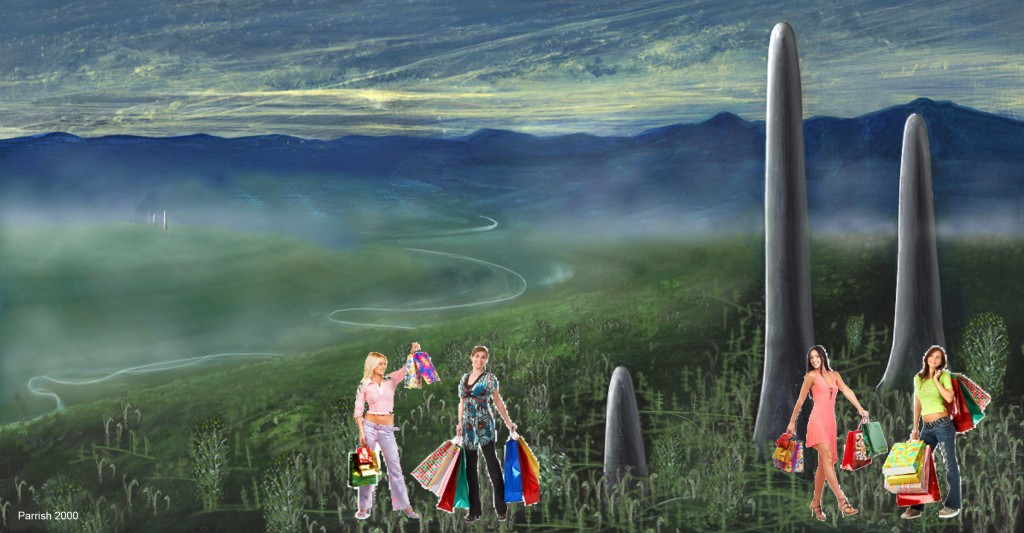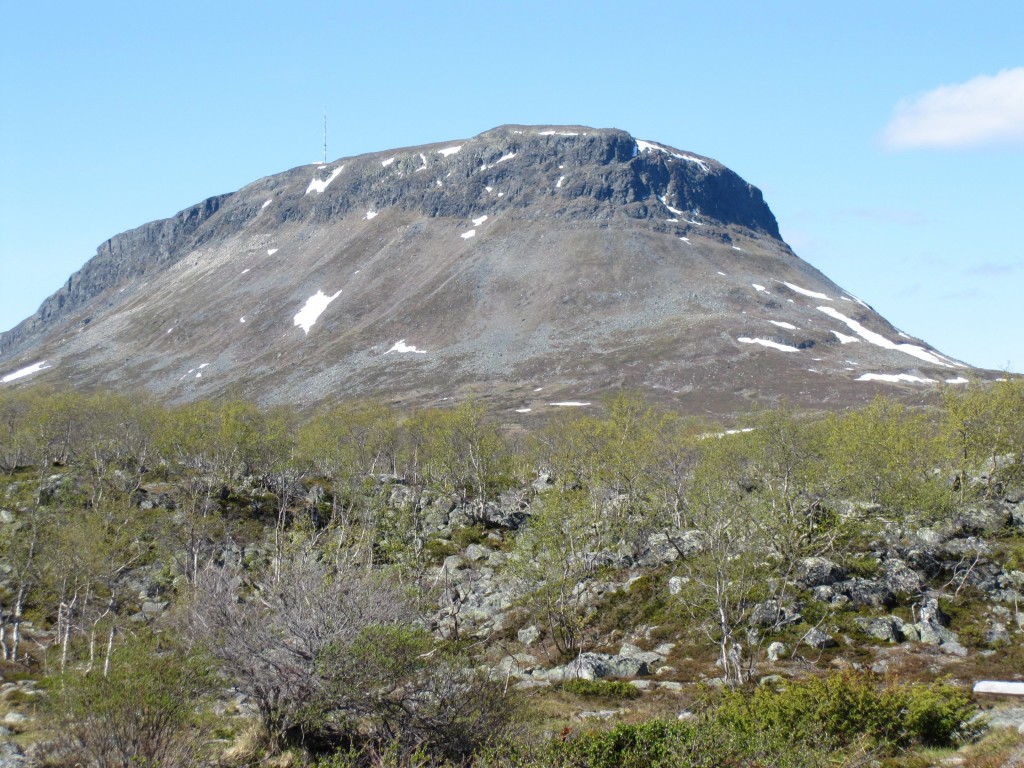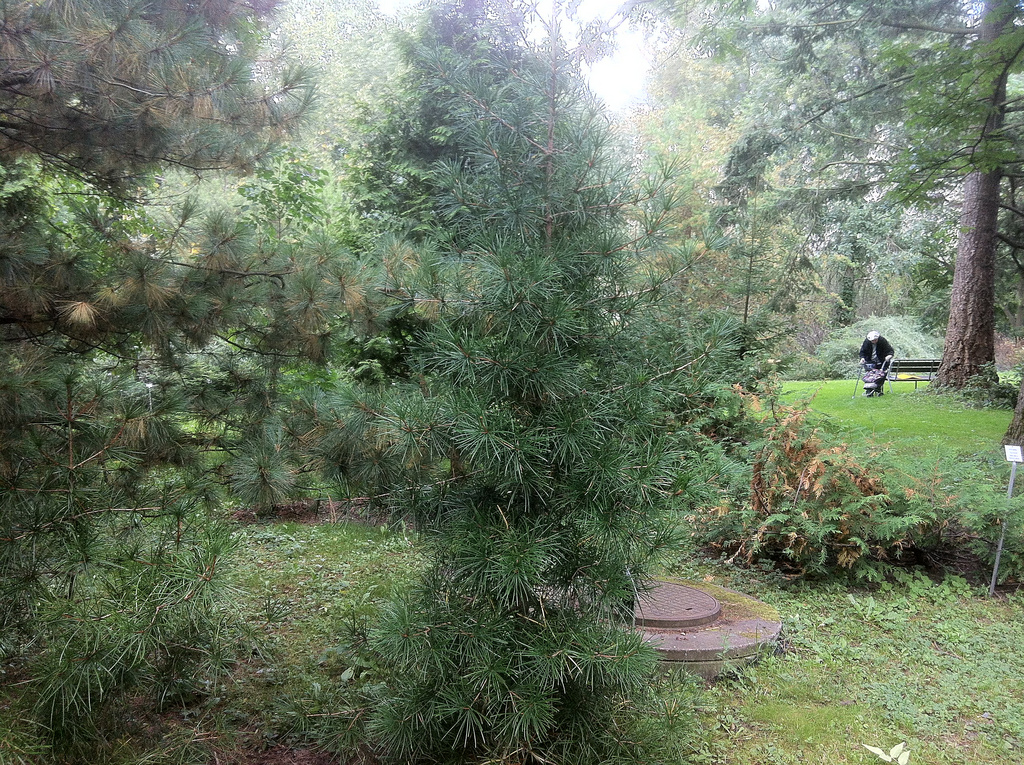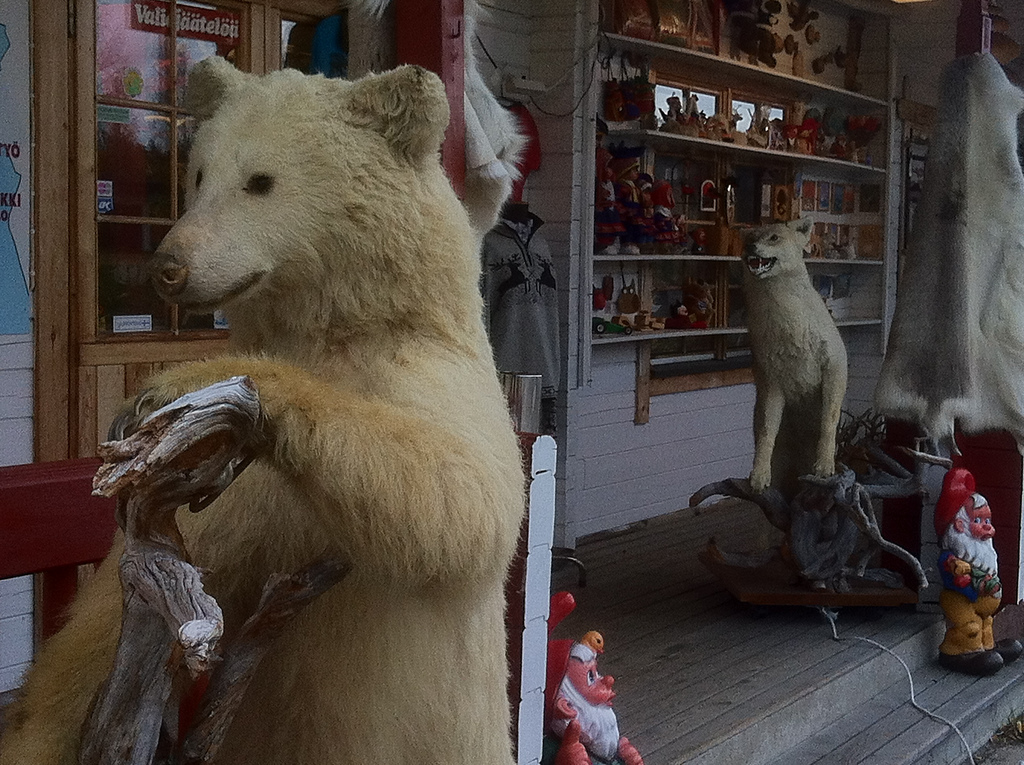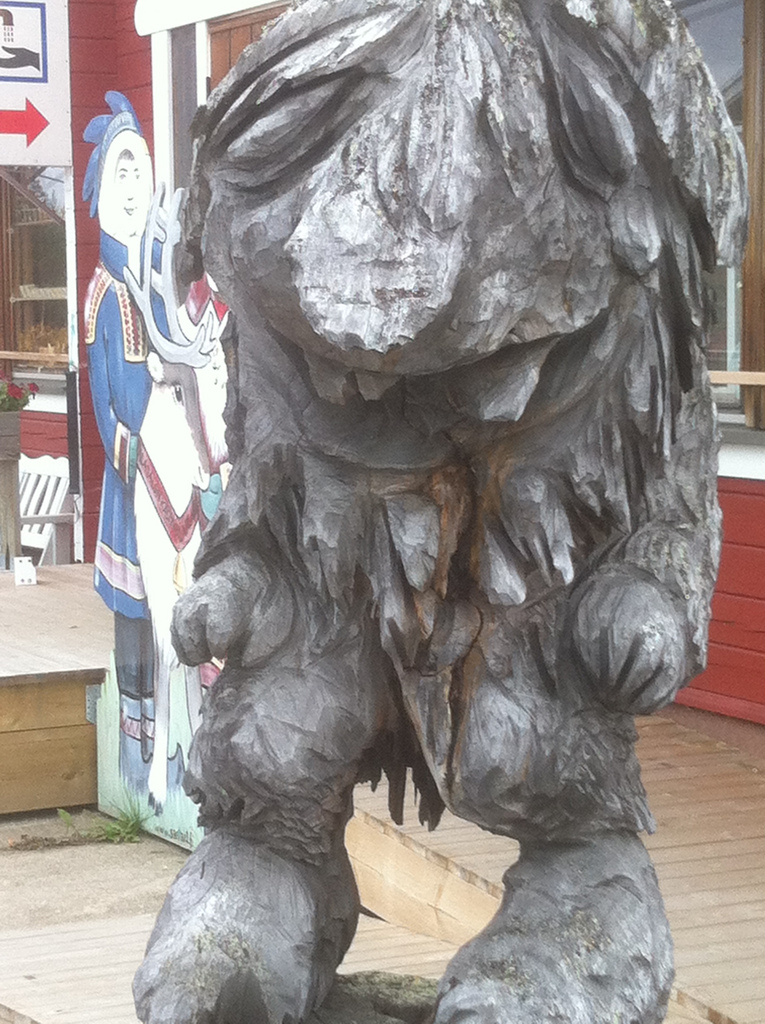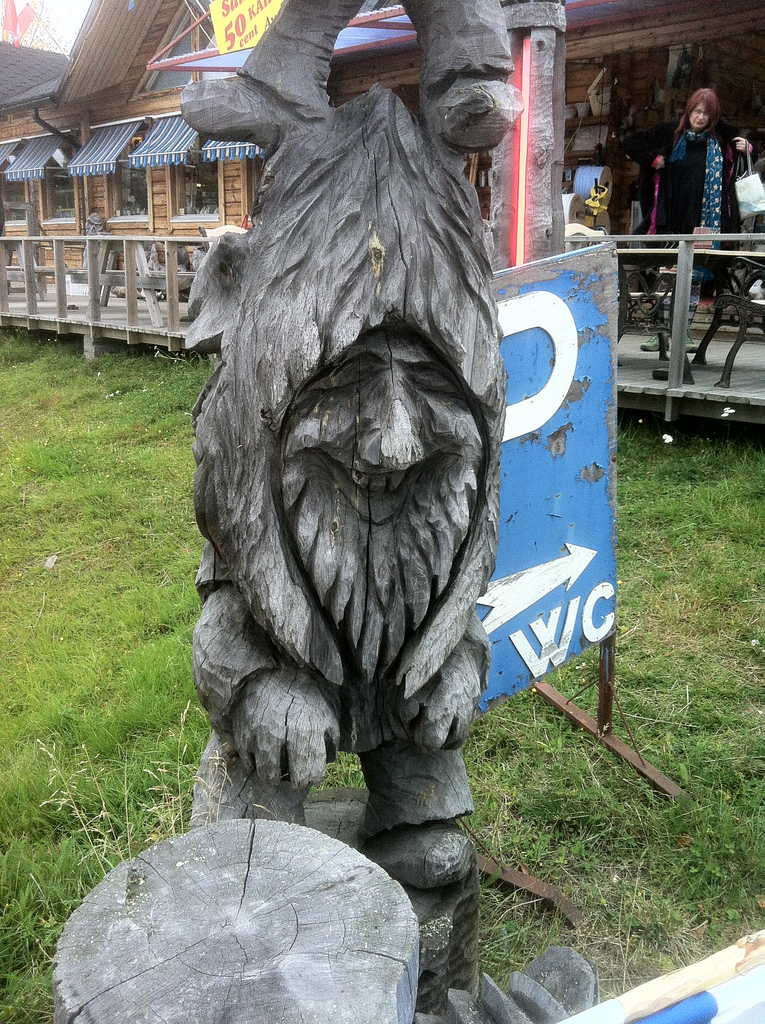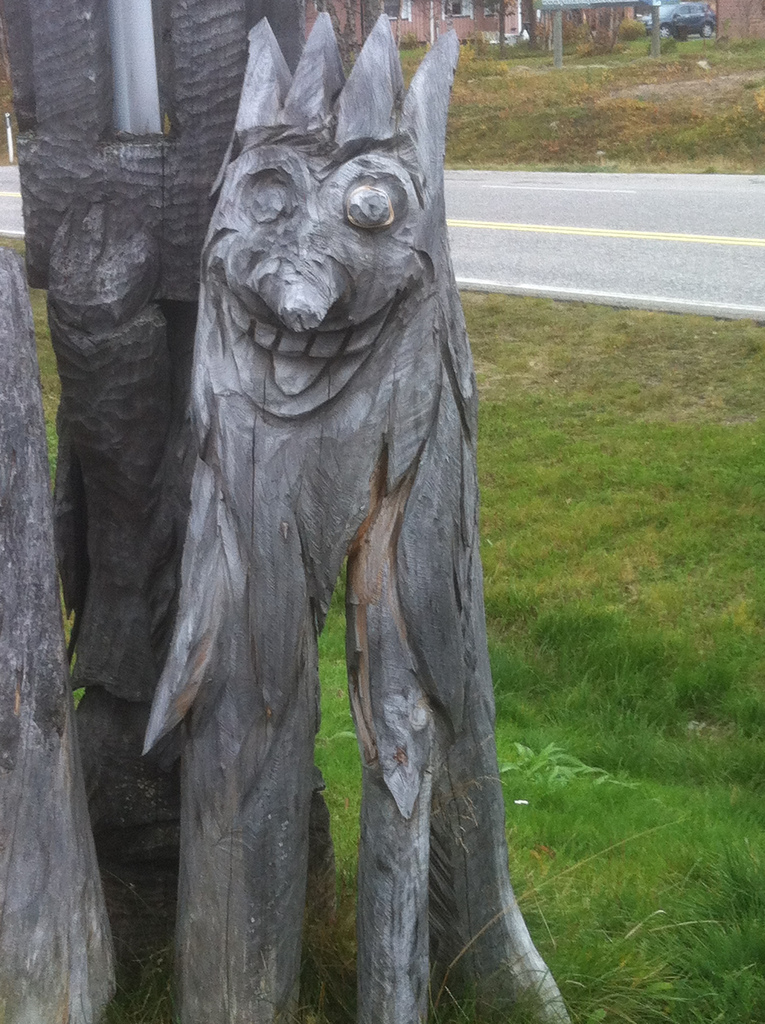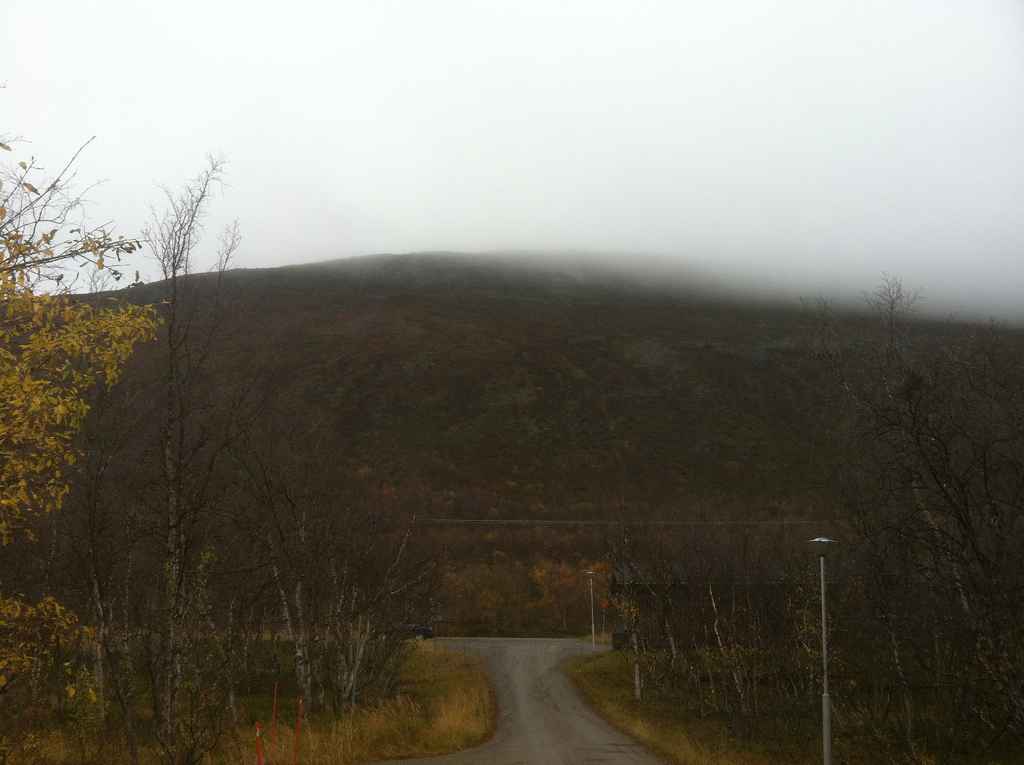The morning broke grey and brooding outside the Kilpisjärvi Biological Station and after a quick breakfast, we were on the trail, hiking up Saana Fjell, guided by Erich Berger of the Finnish Bioart Society. The idea was to familiarize ourselves with the geology, ecology and cultural history of the vicinity so we could dive into our research plans as soon as possible.
The Australian bio-hacker, Oron Catts had already been here for a week to do some scouting for his group’s ‘Journey to the Post-Anthropogenic’ project. They planned to perform a comprehensive bio-archeological survey of the crash site of a German Junkers 88 bomber that came down on Saana in 1942, which included a metagenomic analysis of the plane’s debris field and a recreation of the crash trajectory using a remote-controlled drone.
It wasn’t long before we passed the tree line where the mountain birches gave way to an expanse of open tundra sweeping out before us in a swath of russet heath and exposed rock, with quivering patches of silver cloud here and there snagged on the crenellations of the topography. As if on cue, a small herd of reindeer appeared over the crest of a nearby hill and galloped across our field of view, cocking their heads as they past us and then just as quickly melting into the gloom of the opposite horizon. It is hard to judge distances here in this cold desert. An unusual rock formation in the distance might be small and quite close by or enormous and very far away.
I felt for a moment as if I had been transported back to the Pleistocene, as the landscape I was looking at was what much of Europe and North America would have been like at the end of the last Ice Age, though (other than the reindeer) there wasn’t any of the charismatic megafauna such as the woolly mammoth and the cave lions I would have had to concern myself with back then. Semi-domesticated, reindeer have sustained the local Sami people since ancient times and they are of the few creatures (other than snails) to manufacture the enzyme lichenase, enabling them to survive on lichen during the winter months.
How this delicate ecological balance will be affected by climate change is unclear but to my mind it doesn’t look good. Lichens exist in fairly specific temperature and humidity conditions and in Kilpisjärvi many are symbiotic with the birch trees, themselves a cold-dependent species. A continued warming trend in this region is bound to mean diminishment of suitable reindeer habitat. This has already occurred in North America, where the closely related Woodland Caribou has steadily disappeared from the southern portions of its range.
Standing in the middle of this iconic subarctic landscape, it is hard to imagine rapid changes occurring. For thousands of years, the processes shaping it have been gradual and incremental – the slow scouring of glaciers advancing and retreating, the infiltration of frost with its insidious heaving and splitting, the seasonal flows of meltwater into the lakes and rivers. The cold accentuates the sense of Deep Time here. Rocks dragged by ancient ice flows sit solemnly in place as if they stopped moving only yesterday. The sparse, slow growing vegetation is no match for the overwhelmingly geologic feeling of the place. Even minor disturbances stay visible for centuries.
But add even a small degree of warming and there would be potentially huge changes. Vegetative growth would ramp up, allowing trees to flourish in areas that were once windswept barrens. It is easy to imagine the slopes of Saana darkening as the Scotch Pine (Pinus sylvestris), now found only intermittently in the Kilpisjärvi area but quite common further south, finds conditions more suitable to it and becomes a dominant species. True tundra and the flora and fauna that depend on it could disappear from the area entirely.
Fast-forward a little further and there could be a whole host of new species that find the once frigid environs of Kilpisjärvi newly tolerable. A good many of these are likely to be weeds, which thrive on man-made disturbance. Investigating the grounds around the research station, I soon found a small clump of English plantain (Plantago major) a cosmopolitan weed, dubbed the ‘white man’s footprint’ by North American First Nations, who noticed it growing wherever European colonizers had disturbed the original ecosystem. The humble plantain is just the beginning. I predict that larger weed species will soon be gaining a foothold at Kilpisjärvi; their seeds imported on tire treads or blown in with the wind.
I wondered how it might look here when Ailanthus altissima, a tree variously known as the ‘Ghetto Palm’ or ‘Tree of Heaven,’ moves into the Finnish subarctic. Originally from China, Ailanthus is exuberantly invasive, and has already moved into ruderal (ruin) ecologies throughout the world without any signs of stopping. This tree has the astounding ability to feed off concrete, allowing it to thrive in cracks in pavement, the roofs and facades of under-maintained buildings and pretty much any other place its myriad seeds are able to lodge themselves long enough to germinate.
As the global south becomes uninhabitable due to increasing drought, wildfire and relentless heat, it isn’t hard to imagine a newly temperate Kilpisjärvi becoming a major magnet for climate refugees, human and non-human. Higher annual temperatures, as well as attracting different flora and fauna, could make the cultivation of cereal crops a possibility and perhaps other kinds of intensive agriculture, now more characteristic of Central Europe. This could transform the wild, transhumance landscape into a ‘Kulturlandschaft,’ the subarctic wilderness giving way to ploughed fields, perhaps even orchards. There might be a property boom as the open range lands once suitable only for reindeer husbandry become hosts to cash crops and housing estates. The effect on the traditional Sami lifestyle would be incalculable.
A climate-changed Kilpisjärvi would be a kind of ‘hyperecology’– a co-mingling of adaptive, cosmopolitan weeds, perhaps a few resilient local organisms and a steady in-migration of biota from the south. Outside the national parks and reserves, post-climate change nature will have even less of a free hand. There is massive industrial development afoot for Lapland, particularly mining and its ancillary industries which threaten to blight vast tracts of the relatively pristine landscape with open pit mines, tailings ponds and processing infrastructure, which, as well as inevitably introducing all sorts of pollution will create a new terrain vague of slag heaps and factory wastelands. These ‘brownfields,’ ubiquitous in much of the industrialized world are the preferred habitats of the globally distributed ragamuffin flora: Ailanthus, Buddlea and Robinia, which find the toxic and impoverished soils to their liking.
Industrialized, intensely cultivated and densely populated, the Kilpisjärvi of the not-to-distant future might look strangely familiar to any present day resident of a more temperate latitude. Yet what has been predictable there for so long will soon become much more extreme. We may all find ourselves moving north.
But climate change isn’t likely to stop at this arbitrary point. The heat will likely continue to build, especially if mankind continues dumping carbon into the atmosphere and particularly if the much feared ‘runaway greenhouse’ effect kicks in. What then for Kilpisjärvi? The Paleocene-Eocene Thermal Maximum that happened some 55 million years ago gives us a clue. In those days, the weather north of the Arctic circle was sultry and humid the year round. In addition to the Sciadopitys trees I described in my previous posting, vast swamp forests of Metasequoia and Taxodium spread out across the far north of Eurasia and North America, with turtles and crocodiles plying through the black water and mire. It would have resembled the bayou country of Louisiana or subtropical China, with snow and ice pretty much non-existent, a far cry from the frigid Kilpisjärvi of today, which can be icebound 200 days a year.
Northern regions are well on track for a repeat of these subtropical conditions according to the most agreed upon climate change models, which predict an up to 4 degree Celsius rise globally by the end of the century, with a strong likelihood that changes in high latitudes will be more extreme. Though the biota will surely be more impoverished than it was in the Eocene, not having had anywhere near as much time to evolve, an anthropogenically tropical Lapland would be a mind-boggling yet disturbingly real possibility.
Though our species’ effect on climate can (and will) precipitate far-reaching changes in areas like Kilpisjärvi, there are many planetary processes playing out over which we have no control. The evolution of biota over Deep Time is as much happenstance as forward movement, with periods of great flourishing such as the infamous ‘Cambrian Explosion’ interspersed with ‘reversal’ or mass extinction, either organically or extraterrestrially engendered, which often obliterate whole classes of once dominant organisms and provide opportunities for minor ones to come out of the wings.
Past instigators of mass extinction have included: asteroid impacts, widespread volcanic eruptions with concomitant ocean acidification, even the evolution of photosynthesis by cyanobacteria, which released the toxic gas oxygen into the atmosphere to the detriment of the once dominant anaerobes. Any and all of these scenarios will likely play out again somewhere in the fullness of Deep Time, but barring the elimination of all life on the planet, it is worth speculating on the impact such upheavals would have on the vegetated landscape.
For example, what would happen if flowering plants, also known as angiosperms, dramatically declined, perhaps taken out by some pandemic or selective evolutionary pressure? They’ve really only been common since the Cretaceous and it isn’t hard to imagine Kilpisjärvi’s abundant so-called ‘lower’ plants – mosses, club mosses and liverworts, moving into the vacuum and attaining gigantic proportions, as was the case during in the coal swamps of the Carboniferous Period.
A reduction in the availability of sunlight due to volcanic ash or widespread dust storms could have equally bizarre consequences. With green plants and algea in decline because of the challenge to photosynthesis, there would be a selective advantage for fungi, which might take over Kilpisjärvi forming bizarre, colossal structures as they did during the Devonian Period, some 400 million years ago, and again during the mayhem of the Permian mass extinction. Whether our own species would survive under such extreme and alien conditions is an open question, but life of some sort is almost certain to find a way. Perhaps fungi will regroup to form the planet’s supreme intelligence. Some would say, they already have!
It is this last point that gives me a vestige of hope. We Homo sapiens are a problematic creature, a classic, invasive species that thrives on disturbance, tends toward monoculture and displaces competing biota from its habitat. Yet in the overall scheme of things we are likely to be a transient phenomenon. We will either precipitate our own extinction, (and if the surviving ecosystems of the planet could sigh in relief, they surely would!), or we will find a way to live within our ecological means and develop a more equitable arrangement with the fellow denizens of the biosphere. My stay at the Kilpisjärvi Biological Station offered me the ideal vantage point to consider this conundrum. What we are in now is not so much of a ‘watershed’ moment but more of a ‘timeshed’ moment!


